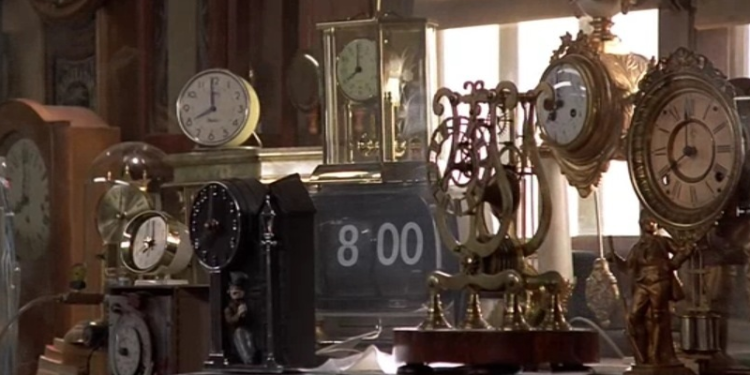The Artificer Class, Part Three

Thanks to several Alert Readers including Trampas Whiteman and Cam Banks, another chapter in the story of the artificer came to my attention: War of the Lance, the 3.5e Dragonlance supplement coincidentally written by Cam Banks, Trampas Whiteman, et al. Today we’re looking at the master class and the Gnomish Tinker prestige class.
Part Zero | Part One | Part Two | Part Three
The Master
This is a strictly nonmagical conception of excellence in crafting. It doesn’t, in itself, offer a lot on tinkering, so we’re covering this for how it feeds into the Gnomish Tinker. If 3.5 Dragonlance has other tinkering rules outside of class features, I don’t know about them right now.
- d6 Hit Die. On par with rogues, so no surprise.
- The class skill model for masters is interesting, because it’s built around pseudo-subclasses, chosen at 1st Choose one of Craftsman, Performer, Professional, and Sage. These receive different skill lists and, as we’ll see, different class feature options. The aims of these four subclasses are still quite broad, so the skills have a lot of ground to cover.
- This text calls them “focuses,” but this feels like ambiguous language to me given how else “focus” is used in 3.x. I’ll be calling them “subclasses,” since I think most of my readers are conversant in 5e. (Though you eventually get a second one; I’ll get to that.)
- 8 + Int skill points per level. A very rare class with as many skill points as a rogue.
- Proficiency in simple weapons, light armor, and shields.
- +3/4 BAB – again, as a rogue.
- Good Will saves, poor Fortitude and Reflex saves.
- Primary Focus grants a free +2 in your subclass’s main skill – Craft for Craftsman, Perform for Performer, Profession for Professional, and Knowledge for Sages.
- At 1st level and six more times thereafter, you choose a Knack from your subclass’s list. Knacks are qualitative improvements with your skills, for the most part.
- At 2nd level and six more times thereafter, you get a bonus feat from a very skill-centered list. You’re going to have a lot of chances to get +3 to one skill or +2 to two skills, is what I’m saying. This is, regrettably, not all that exciting.
- Secondary Focus at 7th level lets you add another subclass’s class skills to your class skill list, choose their knacks when you gain a new knack, and gain a +2 in that subclass’s focus skill. Your bonus in your original focus skill becomes +4.
- Skill Mastery at 10th level lets you select (3 + Int modifier) skills and take 10 on those skills even when under stress. Your skill bonuses are high enough that a roll of a 10 succeeds on most tasks, so you’re guaranteed success. You’ll recognize this as a 3.x rogue feature.
That’s the core of the class. Knacks provide the rest of the interest:
Craftsman Knacks focus on weapon, armor, and tool crafting. They can use their skills in one craft at half value in another (that is, getting extra value out of existing Craft skill ranks), make more money with their work, and make masterwork-plus items. The bonuses extend the benefits of masterwork weapons, armor, and tools from +1 to +5.
Performer Knacks look a lot like 3.x bard features, and they’re great for letting masters of other subclasses pick up party-support features.
Professional Knacks cover a spread of service-industry benefits, particularly in manipulating people, raising prices, and recruiting more help.
Sage Knacks bring some combat effectiveness to Knowledge skills, as well as bringing in a bardic-lore-like feature.
This class covers a common character archetype, particularly in Dragonlance stories: someone who’s great at their job and gets drawn into a life of adventure and danger. From my perspective of many moons later, I’d like to see more knacks and fewer numerical bonuses to skill checks, and a lot less emphasis on skill-bonus-boosting feats. Don’t get me wrong: this fits cleanly into 3.5e’s design – it’s just doing the things I don’t miss from 3.5.
That more or less brings us to the Gnomish Tinker.
Gnomish Tinker Prestige Class
As a reminder, this is the nonmagical side of the tinker or artificer concept. Dragonlance gnomes are generally not magical at all, though the 3.5 books support gnomes being able to be spellcasters. Let me suggest that rogue is actually the best way to enter this class, because Evasion is such a great survival skill for those who live near gnomish contraptions. (Well, there are no Dex saves in the sample Mishaps. But there should be, by gum.)
- d6 Hit Die.
- Must be a gnome. (Does what it says on the tin.)
- Requires 4 ranks of Appraise, 8 ranks of Craft, and 4 ranks of Disable Device.
- The skill list is fairly rogue-friendly, but more on the locks-and-traps side than sneaking.
- 8 + Int skill points.
- Proficiency with simple weapons, light armor, and shields.
- +3/4 BAB.
- Good Reflex saves, poor Fortitude and Will saves.
- Your Toolbelt gives you a pool of 10 points you can spend on powering your Kitbashing and MacGuffin features (on which more in a moment), or as 1:2 bonuses on certain skill rolls. Once used, you’ve got to do stuff to restock. Salvaging parts from traps and weird devices is the coolest restock – I absolutely love that bit.
- Kitbash lets you spend points from your toolbelt and time to make skill checks to upgrade various kinds of gear, in the form of enhancement bonuses to skill checks, attack rolls (not damage), or saving throws, depending on what the thing is.
- Consultant improves the benefit you grant with Aid Another when using a skill you have any ranks in. The bonus scales from +1 (on top of the base +2) to +4 (that is, a total +6).
- MacGuffin at 2nd level lets you spend tool points to slap together weird devices that, while nonmagical, imitate magical effects. In addition to the tool point cost, you can also do this just once per day at start, and you’re limited to 0th-level wizard spells. This improves, over time, to three 0th-level spells, two 1st-level spell per day, or one 2nd-level spell per day (at the 8th level of Gnomish Tinker).
- Remarkable Discovery grants bonus feats at 3rd, 6th, and 9th level, chosen from a small but highly varied list; if you’ve picked up spellcasting (aside from the fact that Gnomish Tinker wasn’t a great choice for you), you can also buy item creation feats with these.
- Patent Pending at 4th level is when everyone* admits that you know what you’re talking about and deserve some respect; it also improves your skill bonuses from gnome racial features slightly. Getting to use your Craft/Knowledge/Profession ranks in place of Bluff, Diplomacy, or Intimidate with the right kind of audience is awesome – it sells that whole crafter-at-a-trade-convention or academic-among-academics thing that Dragonlance gnomes have going on.
- Everyone: Gnomes and people with at least 1 rank in a Craft that you also have at least 1 rank in.
- In Development at 7th level further increases your racial skill bonus, and grants you 4 ranks in a Craft, Knowledge, or Profession that you otherwise have no ranks in. Picking one that will matter to you at 12th level and later is the hard part here.
- Grand Design at 10th level is Gnomish Enlightenment, comparable to a good number of 10th-level prestige class features. Add your Int bonus to saves against mind-affect spells and effects, and you can use your Int in place of your Wisdom for Listen, Spot, and Sense Motive checks. Neat! Maybe a long time to wait for this, but neat!
This prestige class isn’t great on raw power – it’s wasteful and largely pointless to try to extract combat effectiveness from your MacGuffins. It’s over in Races of Ansalon that we get a full tinkering-based crafting system (and a reprint of the Gnomish Tinker).
Gnomish Contraptions
Creating a new contraption is a three-stage process: R&D, Construction & Assembly, and Quality Assurance. In the R&D step, you determine Total Complexity. If Total Complexity is greater than your character level + your ranks in Knowledge (architecture & engineering) + your Intelligence score (not modifier), you need to form a design group to pool your talents with other engineers – but that further increases Complexity.
A contraption might be stationary, vehicular, or portable. That choice determines all sorts of things about its possible functions and Complexity. Unsurprisingly, the convenience of portability carries a steep cost in Complexity. Vehicles also have brutal Complexity costs, scaling further by size, but I don’t really need to explain how much fun a Colossal vehicle might be? (If yes: Charlize Theron has a film for you.) Baseline HD, attack bonus, and AC for your contraption all come from its size, though you can add more Hit Dice by paying Complexity, or save on Complexity by sacrificing some durability.
The modifiers for different options here are pretty intense, with a modest amount of multiplication and division to go with addition. Knowing D&D’s long and storied romance with giant tables of modifiers, I’m surprised more of this information wasn’t stored that way, but I think it stays mostly manageable.
Then we get into functions, with a lot more fiddly math around attacks, skills, defenses, duplicating feats, stacking multiple effects, and the terribly gauche practice of incorporating magic.
Finally, take one-tenth of your Complexity, add 10, and you’ve got your Complexity DC. This is your DC for all rolls around crafting, testing, and getting approval for your contraption, as well as the DC to use it.
Now that the player has designed it, it’s time for the character to design it: one day for every 5 points of Complexity, less one for each designer past the first. Then you roll to see if the whole thing makes it through Final Schematic Approval: a Knowledge (architecture and engineering) check against the Complexity DC, with any contributing designers using Aid Another. This is a single-point-of-failure roll; going back to the drawing board either costs Complexity (if you make no significant changes, but add some stuff to fool the approvals board) or a lot of time (if you make some real changes).
Now you’re ready to start construction. This revolves around time, money, and die rolls, with a few paragraphs of detailed rules for each. One gets the very strong impression that this whole subsystem, but especially the construction stages, were written by someone with a lifetime of painful engineering experience. That there are rules for securing funding by seeking support from other guilds really tells you something. (What it tells you is that these engineers need sales weasels to handle their Diplomacy checks for them. In the least surprising move literally ever, gnomish tinkers don’t have Diplomacy as a class skill.)
It’s still gnomish tinkering, so Quirks come in at the edges. Every contraption starts with 1 Quirk and goes up from there, gaining more from large amounts of Total Complexity and for any natural 1s on the crafting rolls. Quirks form a menu of Mishaps that can occur when your roll to use an item is a natural 1. There’s a whole table of Quirks and attached Mishaps, and the text suggests that DMs and players should aggressively expand it. The rules for Rebuilding and Repair introduce more Quirks to the system.
There’s another round of approvals from the guild higher-ups after construction and before delivery to QA. Oh, waterfall development, is there nothing you can’t ruin?
Quality Assurance is the last big stage, and it has the same darkly comic engineering tone as the rest of these rules. “If any Mishaps occur at this time, the contraption is immediately stamped with Failure to Operate and wrapped with caution tape; it must go back to Construction and Assembly and be rebuilt.” (Remember, Rebuilding adds Quirks, it doesn’t remove them.) If this step goes well, Approval means your contraption is protected by patent, more easily reproducible, and more easily repaired (because schematics are on file). If this step goes badly, well, maybe you have to leave Mt. Nevermind because the bureaucrats just don’t understand your scientific genius. This always goes well and never starts off the plots of disaster movies… right?
This system is a delight to read. I mean that sincerely – it is dystopic and hilarious, sliding a healthy measure of Paranoia into your Dragonlance campaign. It’s a good way to pass six months or a year of game time, and marginally less time at the table. I’ve read enough crunchy and byzantine systems to measure them in metric tonnage; this is one of the few that is genuinely fun to read and seems like it would be fun for the whole table while one player works through it. I’ll forgive almost any sin if a subsystem drives story at every step of its process. It’s incredibly hard to write a halfway decent crafting system for a tabletop game, so as long as you don’t expect a light and breezy experience or one you’ll complete and repeat several times in the course of play, this is absolutely great.
The Artificer: Ballistics Report
The master is a character class for people who are sure they want to play this thing, or for NPCs who are too close to heroic for the expert class to fit the bill. It does look a lot more appealing in eras where some or all magic is absent from Krynn. The same is even more true for the Gnomish Tinker. Within our conversation about the artificer, the Gnomish Tinker is the tech-that-looks-like-magic version, while Eberron’s artificer is the magic-treated-as-tech version.
The Gnomish Tinker of 3.5 is indisputably more inviting and survivable to play than the 1e tinker class. Especially if you avoid actual gnomish contraptions. Honestly, it’s a toss-up whether the engineering or the paperwork are more dangerous to your health and sanity.
The magic/tech divide in artificer or tinkering classes is coming to a head. Next time in the History of the Artificer, we’ll see how 4e handles the question.



